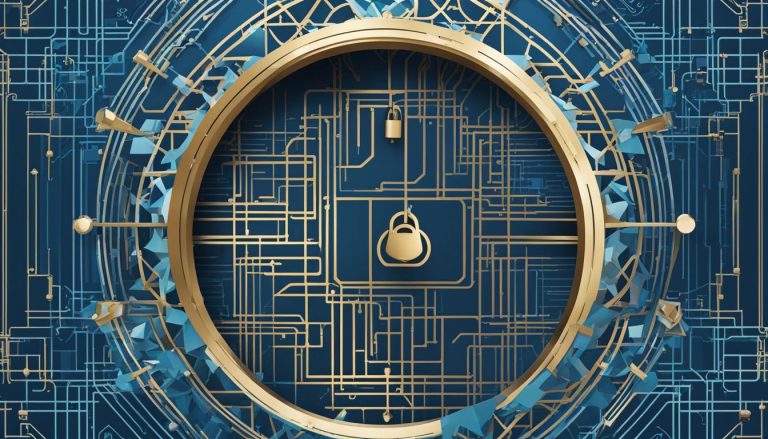Greetings! As a professional in the field of cybersecurity, I am often asked about the nature of malware and its impact on computer networks. Today, I will delve into the topic of malware and provide you with a comprehensive understanding of its definition and the dangers it poses.
Malware, short for malicious software, is a treacherous creation that infiltrates and corrupts computer networks. Its primary objective is to cause harm, either by stealing valuable information or by disrupting the smooth functioning of systems for personal gain or sabotage. This nefarious software can exfiltrate sensitive data, disrupt networks and PCs, destroy computer systems, pilfer computer resources, and even facilitate the illicit sale of intellectual property on the dark web.
To safeguard against malware, businesses need to adopt a multi-pronged approach. It involves employing preventative tools and technologies that continually monitor and detect any potential malware breaches that might have evaded the initial perimeter defenses. Regular network scanning is vital to identify and remove malware promptly, as traditional antivirus products may not always provide sufficient protection.
Key Takeaways:
- Malware, short for malicious software, invades and corrupts computer networks.
- Its objectives include data theft, system disruptions, and resource pilferage.
- Preventative measures and continuous monitoring are crucial in defending against malware.
- Regular network scanning is necessary to detect and remove malware promptly.
- Traditional antivirus products may not offer sufficient protection against evolving malware threats.
Types of Malware
When it comes to understanding cyber threats, it’s vital to familiarize yourself with the different types of malware that can compromise your computer systems. Each type of malware has its own unique characteristics and effects. By being aware of these various forms of malware, you can better protect yourself against potential attacks.
1. Viruses: Viruses are one of the most well-known types of malware. They attach themselves to files or documents, disrupting system operations. Once infected, viruses can spread to other computers through file sharing or email attachments.
2. Worms: Worms are self-replicating programs that spread across networks without the need for a host program. They can quickly infect multiple systems, causing widespread damage and disruption.
3. Trojan Viruses: Trojan viruses disguise themselves as legitimate software, tricking users into downloading and installing them. Once activated, these malware programs gain unauthorized access to sensitive data and can cause extensive harm.
4. Spyware: Spyware is designed to operate silently on a computer, collecting information about the user without their knowledge or consent. This type of malware can record keystrokes, capture personal data, and even hijack webcams.
5. Adware: Adware is primarily focused on collecting data about an individual’s computer usage for targeted advertising purposes. While not as damaging as other types of malware, it can be intrusive and compromise user privacy.
6. Ransomware: Ransomware is a particularly malicious form of malware that encrypts a user’s files, rendering them inaccessible. The attacker then demands a ransom in exchange for the decryption key, often leaving victims with no choice but to pay up or risk losing their data.
7. Fileless Malware: Fileless malware operates from a computer’s memory rather than relying on files stored on the hard drive. This makes it more difficult to detect and removes the need for traditional antivirus software to identify specific files.
Understanding the different types of malware is crucial in protecting your computer systems and sensitive data. By implementing robust security measures, such as antivirus software, regular system updates, and user education on safe browsing habits, you can defend against these malicious threats effectively.
| Type of Malware | Description |
|---|---|
| Virus | Attaches to files or documents, disrupting system operations and spreading to other computers. |
| Worms | Self-replicating programs that spread across networks without the need for a host program. |
| Trojan Viruses | Disguise themselves as legitimate software, gaining unauthorized access to sensitive data. |
| Spyware | Operates silently, collecting information about the user without their knowledge or consent. |
| Adware | Collects data about an individual’s computer usage for targeted advertising purposes. |
| Ransomware | Encrypts a user’s files and demands a ransom in exchange for the decryption key. |
| Fileless Malware | Operates from a computer’s memory, making it harder to detect and remove. |
How to Protect Against Malware
Protecting against malware is vital in safeguarding your computer networks and sensitive data. By implementing the right measures, you can significantly reduce the risk of malware infections. Here are some key steps to protect yourself:
- Educate users on safe behavior: Educate yourself and your team on safe internet practices, such as not downloading or running unknown software and being cautious of phishing emails. Awareness is crucial in preventing malware attacks.
- Install reputable antivirus software: Choose a trusted antivirus and antimalware software to protect your system. Make sure to keep it up-to-date to ensure the latest security definitions are downloaded.
- Implement network security measures: Use firewalls and intrusion prevention systems to filter incoming and outgoing network traffic. Additionally, enable browser-level security features to block malicious websites.
- Regularly audit website security: Conduct regular security audits to identify and address any vulnerabilities on your websites. This helps prevent malware from exploiting weaknesses in your web applications.
- Create verified backups: Regularly backup your important data and ensure the backups are verified to prevent data loss in case of a malware infection. Having a reliable backup system can save you time, money, and stress.
By following these preventative measures, you can significantly reduce the chances of falling victim to malware attacks.
Protecting Yourself Against Malware Quotes:
“The best defense against malware is a combination of user education, reliable security software, and regular backups.” – Cybersecurity Expert
“Prevention is key when it comes to combating malware. Invest in the right tools and practices to protect yourself and your business.” – IT Consultant
Remember, malware protection is an ongoing effort. Stay vigilant, keep your software up-to-date, and be cautious of suspicious online activities. By taking proactive steps to prevent malware infections, you can ensure a safer digital environment.
| Malware Protection Measures | Key Benefits |
|---|---|
| Educate users on safe behavior | Empowers users to make informed decisions and avoid risky online activities. |
| Install reputable antivirus software | Detects and removes known malware threats, providing real-time protection. |
| Implement network security measures | Creates a barrier between your internal network and external threats, reducing the risk of malware infiltrations. |
| Regularly audit website security | Identifies vulnerabilities and strengthens the security of your web applications, minimizing the risk of malware exploits. |
| Create verified backups | Ensures data recovery in case of a malware attack, preventing significant data loss and business disruptions. |
How to Detect and Remove Malware
When it comes to protecting your computer from malware, it is essential to be able to detect and remove any malicious software that may have infiltrated your system. By promptly identifying malware and taking appropriate action, you can mitigate potential damage and ensure the security of your data.
Recognizing the Signs
There are several indicators that your computer may be infected with malware. These include sudden slowdowns in performance, frequent crashes or error messages, excessive network activity, and the appearance of unexpected pop-up advertisements. If you notice any of these signs, it is important to investigate further to determine if malware is the cause.
Using Antivirus Software
One of the most effective ways to detect and remove malware is by using reputable antivirus software. These programs are designed to continually scan your computer for any signs of malicious activity and can detect and remove a wide range of malware types. It is important to regularly update your antivirus software to ensure it has the latest virus definitions and can effectively protect against the newest threats.
Taking Action
If your antivirus software detects malware on your computer, it is crucial to take immediate action to remove it. Most antivirus programs have a built-in feature that allows you to quarantine or delete the infected files. Quarantining the files can help prevent further damage while you assess the impact of the malware and determine the best course of action. If you are unsure about how to proceed, it is recommended to consult with a cybersecurity professional for assistance.
Table: Steps to Detect and Remove Malware
| Step | Description |
|---|---|
| Step 1 | Pay attention to computer performance and any unusual behavior. |
| Step 2 | Scan your computer with reputable antivirus software to detect malware. |
| Step 3 | If malware is detected, quarantine or delete the infected files. |
| Step 4 | Regularly update your antivirus software and perform routine scans. |
| Step 5 | Consult with a cybersecurity professional for guidance if needed. |
By staying vigilant and implementing effective malware detection and removal strategies, you can safeguard your computer and protect your sensitive data from malicious threats.
Malware Attacks and Objectives
In today’s digital landscape, malware attacks pose a significant threat to individuals, businesses, and organizations. Cybercriminals employ various tactics to launch these attacks, driven by different objectives that range from data exfiltration to disrupting operations and demanding ransom. Understanding the motives behind malware attacks is crucial in implementing effective defense strategies.
Malware Attack Objectives
Malware attacks are motivated by different objectives, each aimed at achieving specific outcomes:
- Data Exfiltration: One of the primary objectives of malware attacks is to exfiltrate sensitive information such as personal data, financial records, and intellectual property. Cybercriminals exploit vulnerabilities in systems to gain unauthorized access to valuable data, which can be used for identity theft, financial fraud, or sold on the dark web.
- Disrupting Operations: Some malware attacks aim to disrupt the normal functioning of computer systems or networks. By infecting critical infrastructure or corporate networks, cybercriminals can cause downtime, disrupt operations, and inflict financial losses. This objective is particularly common in targeted attacks against businesses, government agencies, or critical infrastructure.
- Ransom Demands: Ransomware attacks have gained prominence in recent years, involving the use of malware to encrypt files or lock users out of their systems. Attackers then demand a ransom payment in exchange for restoring access to the compromised systems. This objective combines financial gain with the threat of data loss or exposure.
By understanding the objectives of malware attacks, individuals and organizations can better prepare themselves against these threats and implement robust security measures.
Note: The image above illustrates the complexities and diversity of malware attacks, highlighting the various objectives that drive cybercriminals.
Conclusion
After exploring the world of malware, it is clear that this malicious software poses a significant threat to computer networks. By understanding the different types of malware and implementing proper protection measures, we can effectively safeguard against attacks.
Constant vigilance is necessary in the battle against malware. Educating ourselves and others on safe behavior, such as avoiding unknown software and being cautious of phishing emails, is a crucial first step in preventing infections.
Reliable security software, like reputable antivirus programs, combined with regular updates, provides an additional layer of defense. Network security protocols, such as firewalls and strong web browser-level security, help create a fortified digital space.
Lastly, performing regular website security audits and creating regular, verified backups are important in maintaining a proactive stance against malware attacks. By staying informed and taking preventive measures, we can better protect ourselves and our organizations from the damaging effects of malware.
FAQ
What is malware?
Malware, short for malicious software, is developed with the intent of invading or corrupting computer networks. It aims to cause harm by stealing information or resources for monetary gain or sabotage.
What are the different types of malware?
The different types of malware include viruses, worms, Trojan viruses, spyware, adware, ransomware, and fileless malware. Each type has its own unique characteristics and effects on computer systems.
How can I protect against malware?
To protect against malware, it is important to educate users on safe behavior, install reputable antivirus and antimalware software, implement network security measures, perform regular website security audits, and create regular, verified backups.
How can I detect and remove malware?
Users can detect malware by observing unusual computer activity, and antivirus and antimalware software can detect and remove malware through real-time protection and routine system scans. Tools like Windows Defender and Malwarebytes are examples of software that can detect and remove malware.
What are the objectives of malware attacks?
Malware attacks have various objectives, including exfiltrating information, disrupting operations, and demanding payment.
What is the importance of understanding malware?
Understanding malware is crucial in safeguarding computer networks against attacks. By staying informed and proactive, individuals and organizations can better defend their digital space against malware attacks.
Janina is a senior specialist in information technology


